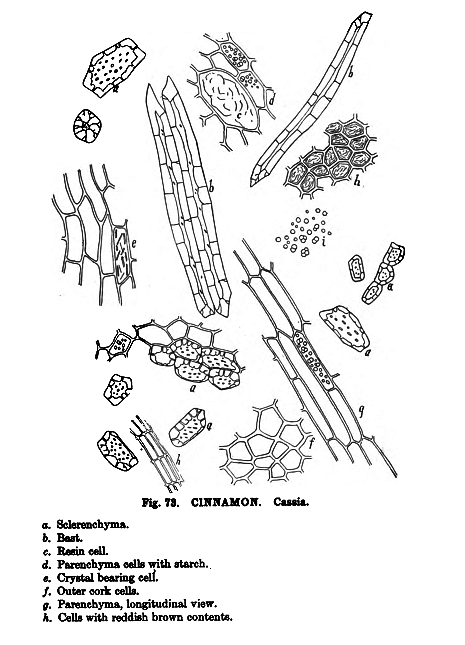Cinnamomum aromaticum (bark)
(Created page with '{{Botanical | source=Schneider, A. (1921) The Microanalysis of Powdered Vegetable Drugs, 2nd ed. | description=Cinnamon (powdered bark) (''Cinnamomum aromaticum'') La…') |
|||
| Line 1: | Line 1: | ||
{{Botanical | source=Schneider, A. (1921) The Microanalysis of Powdered Vegetable Drugs, 2nd ed. | {{Botanical | source=Schneider, A. (1921) The Microanalysis of Powdered Vegetable Drugs, 2nd ed. | ||
| + | | mainimage=Microanalysis_powdered_vegetable_google_ver_cinnamon_cassia.png | ||
| description=Cinnamon (powdered bark) (''Cinnamomum aromaticum'') Lauraceae. (''Cassia Cinnamon'') | | description=Cinnamon (powdered bark) (''Cinnamomum aromaticum'') Lauraceae. (''Cassia Cinnamon'') | ||
| color=Cinnamon brown (reddish brown). | | color=Cinnamon brown (reddish brown). | ||
Revision as of 06:55, 26 January 2011
Cinnamon (powdered bark) (Cinnamomum aromaticum) Lauraceae. (Cassia Cinnamon)
General Characteristics Rather short, thick walled bast cells sclerenchyma with cell walls unequally thickened parenchyma cells with compound starch granules; cells with numerous small prismatic crystals; large resin bearing cells; cells of outer bark suberized and with reddish brown contents. Cassia bark contains relatively more starch than do the other varieties of cinnamon barks and relatively less bast tissue.
Color Cinnamon brown (reddish brown).
Scent Fragrant, aromatic, very characteristic.
Flavor Sweet, pungent, somewhat astringent.
Ash Content Ash about 6.5 per cent.
Reported Adulterants Cassia cinnamon in particular is likely to be adulterated with inferior cassia barks, clove bark, flour, inert vegetable substances. The quality of cassia cinnamon is proportionate to the number of bast cells present. The very inferior grades show few bast cells, which indicates that the outer older bark tissue predominates. Cassia cinnamons could readily be graded according to the bast cell count. The organoleptic tests, especially taste and odor, are also valuable guides to quality.
Source: Schneider, A. (1921) The Microanalysis of Powdered Vegetable Drugs, 2nd ed. [1]
Cite error: <ref> tags exist, but no <references/> tag was found
